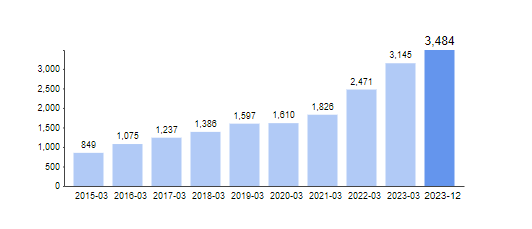20 Best Ways For Picking Ai For Stock Trading Websites
20 Best Ways For Picking Ai For Stock Trading Websites
Blog Article
Top 10 Tips When Evaluating Ai And Machine Learning Models On Ai Trading Platforms For Stocks
Assessing the AI and machine learning (ML) models utilized by trading and stock prediction platforms is essential to ensure that they provide accurate, reliable, and useful insights. Models that are poorly constructed or hyped up can result in flawed predictions and financial loss. Here are 10 top ways to evaluate the AI/ML platforms of these platforms.
1. Learn about the goal and methodology of this model
Clear objective: Determine whether the model was created for trading in short-term terms or long-term investments, or sentiment analysis, or risk management.
Algorithm disclosure: Find out if the platform discloses which algorithms it employs (e.g. neural networks or reinforcement learning).
Customization. Examine whether the parameters of the model can be customized to suit your personal trading strategy.
2. Examine the performance of models using indicators
Accuracy: Verify the accuracy of the model when it comes to the prediction of the future. But, don't just depend on this measurement as it may be misleading when used with financial markets.
Recall and precision: Determine the accuracy of the model to detect real positives, e.g. correctly predicted price changes.
Risk-adjusted return: Determine whether the model's forecasts will lead to profitable trades, after taking into account risks (e.g. Sharpe ratio, Sortino coefficient).
3. Make sure you test the model using Backtesting
The backtesting of the model using the data from the past allows you to compare its performance with previous market conditions.
Testing outside of sample: Make sure your model has been tested using data it was not developed on in order to prevent overfitting.
Scenario analysis: Examine the performance of your model under different market scenarios (e.g. bull markets, bear markets, high volatility).
4. Be sure to check for any overfitting
Overfitting Signs: Look out for models which perform exceptionally well when trained but poorly with untrained data.
Regularization Techniques: Look to see if your platform uses techniques like dropout or L1/L2 regularization to prevent overfitting.
Cross-validation (cross-validation) Check that your platform uses cross-validation to assess the model's generalizability.
5. Assess Feature Engineering
Relevant features: Make sure the model is using meaningful features, such as price, volume or technical indicators. Also, verify the macroeconomic and sentiment data.
Make sure to select features with care Make sure that the platform will contain statistically significant information and not irrelevant or redundant ones.
Dynamic features updates: Check whether the model is adjusting over time to new features or to changing market conditions.
6. Evaluate Model Explainability
Interpretability: Make sure the model provides clear explanations of its assumptions (e.g. SHAP values, significance of particular features).
Black-box model Beware of platforms that make use of models that are overly complex (e.g. deep neural network) without describing the the tools.
User-friendly Insights that are easy to understand: Ensure that the platform presents an actionable information in a format traders can easily understand and utilize.
7. Check the adaptability of your model
Market shifts: Determine that the model is able to adjust to market conditions that change (e.g. changes in regulations, economic shifts or black swan-related events).
Continuous learning: Check if the platform continuously updates the model to include new information. This can improve performance.
Feedback loops - Ensure that the platform is able to incorporate real-world feedback and user feedback to improve the design.
8. Be sure to look for Bias & Fairness
Data bias: Make sure that the information provided within the program of training is real and not biased (e.g., a bias toward certain industries or periods of time).
Model bias: Determine if the platform actively monitors and mitigates biases in the predictions made by the model.
Fairness: Ensure the model does not disproportionately favor or disadvantage certain stocks, sectors or trading styles.
9. Evaluate the effectiveness of Computational
Speed: Determine whether the model can make predictions in real-time, or with minimal latency. This is particularly important for traders with high frequency.
Scalability: Verify whether the platform can manage large datasets and multiple users without affecting performance.
Utilization of resources: Check if the model has been optimized to use computational resources effectively (e.g. GPU/TPU).
Review Transparency, Accountability and Other Problems
Model documentation: Ensure that the platform is able to provide detailed documentation on the model's structure as well as its training process, as well as the limitations.
Third-party validation: Determine whether the model was independently verified or audited by a third party.
Error handling: Check to see if your platform incorporates mechanisms for detecting or rectifying model errors.
Bonus Tips
Case studies and user reviews: Use user feedback and case study to evaluate the actual performance of the model.
Trial period - Use the demo or trial version for free to test out the model and its predictions.
Support for customers: Ensure that the platform can provide robust customer support to help solve any product or technical issues.
By following these tips by following these tips, you will be able to evaluate the AI and ML models of stocks prediction platforms, making sure they are accurate, transparent, and aligned with your trading goals. Follow the recommended coincheckup url for blog recommendations including ai trading platform, trading ai bot, coincheckup, ai stock, stock market software, ai stock market, best ai etf, copyright financial advisor, stock analysis tool, copyright ai trading bot and more.
Top 10 Tips On Assessing The Regulatory Compliance Of Ai Stock Prediction/Analyzing Trading Platforms
Compliance with regulatory requirements is an essential factor when evaluating AI stock predicting/analyzing trading platforms. Compliance assists in ensuring that the platform operates within the legal frameworks and safeguarding the privacy of users. Here are 10 top suggestions to evaluate the regulatory compliance on these platforms.
1. Verify License and Registration
The regulatory bodies: Make sure that the website is licensed and registered by the relevant financial regulatory authority (e.g. SEC, FCA, ASIC, etc.) in your nation.
Broker partnerships: If a platform integrates with brokers, verify that brokers are also properly licensed and regulated.
Public records: Go to the website of the regulator to find the status of registration for the platform as well as any previous violations.
2. Assess the privacy of your data Compliance
GDPR In the event that you are serving or operating within the EU ensure that your platform is in compliance with the General Data Protection Regulation.
CCPA For those who reside in California Verify that they are in compliance with the California Consumer Privacy Act (CCPA).
Data handling policies: Read the privacy policies of the platform to see how it describes data collection, storage, and sharing.
3. Evaluation of Anti-Money Laundering measures
AML policies: Ensure the platform has robust AML policies in place to detect and prevent cash laundering.
KYC Procedures: Verify whether the platform has procedures in place to confirm the identities of its users.
Monitor transactions: Make sure that the platform tracks transactions in order to identify suspicious activity and alerts relevant authorities.
4. Make sure you are in your compliance with Trading Regulations
Market manipulation: Make sure that the platform contains measures to prevent market manipulation, such as spoofing, wash trading.
Order types: Ensure that the website is compliant with the regulations regarding types of orders.
Best execution: Verify that the platform follows best execution practices to ensure trades are executed for the best price.
5. Assessment of Cybersecurity's compliance
Data encryption. Make sure your platform has encryption for user data, both during transit and in the rest.
Incident response Response to incidents Verify the platform's plan to take action in the event of cyberattacks or data breaches.
Verify certifications.
6. Transparency Evaluation and Transparency Evaluation and
Fee disclosure: Verify that the platform clearly discloses all fees including hidden charges or additional costs.
Risk disclosure: Make sure that the platform has clear risk disclosures, especially for high-risk or leveraged trading strategies.
Performance reporting: Check whether the AI platform's models are clear and accurately reported.
7. Check for Compliance with International Regulations
Trading cross-border If you plan to conduct international trade, ensure that the platform complies in all countries.
Tax reporting: Check the platform's tools or reports for users to comply with tax regulations.
Sanctions compliance: Ensure the platform is compliant with international sanctions and does not allow trading with prohibited entities or countries.
8. Examining Audit trail and Record-Keeping
Transaction records: Ensure the platform maintains detailed records of all transactions for regulatory and audit purposes.
User activity logs - Verify that the platform logs all user activities including logins to the platform, trades executed and any modifications to your account settings.
Audit readiness: Determine if the platform can provide necessary documents and logs in the event an audit by a regulatory agency.
9. Evaluation of Compliance AI Specific Regulations
Algorithmic rules for trading: If a platform allows the use of algorithms, it has to comply with European regulations like MiFID II and U.S. Reg SCI.
Fairness and Bias: Ensure that the platform detects, and mitigates, biases within its AI models to ensure fair trading.
Explainability: Ensure that the platform has clear explanations of AI-driven decisions and predictions in accordance with certain rules.
Review the User's Feedback and Regulatory Histories
User reviews: Conduct studies to determine the platform's reputation in terms of regulatory conformity.
History of regulatory violations - Check to see if the platform has been convicted of any previous regulatory violations or fines.
Third-party checks: Ensure the platform's compliance with regulations by checking if it undergoes regular audits by third parties.
Bonus Tips
Legal consultations: You may consider consulting an attorney to determine if the platform meets the applicable laws.
Trial period for free: You can make use of a demo or a no-cost trial to evaluate the conformity features of the platform and its documentation.
Customer support: Ensure the platform provides support for compliance-related questions or concerns.
The following tips can assist you assess the compliance with regulations for an AI stock-predicting/analyzing trading platform. You'll be able to pick a system that is in compliance with legal frameworks while protecting your security. Compliance is crucial since it not only reduces the risk of legal liability, but also builds trust and confidence for the platform. Check out the most popular free ai tool for stock market india for blog recommendations including trader ai review, ai based trading platform, canadian ai stocks, trading chart ai, invest ai, chart ai for trading, ai investing app, best ai etf, trading ai, ai trading platform and more.